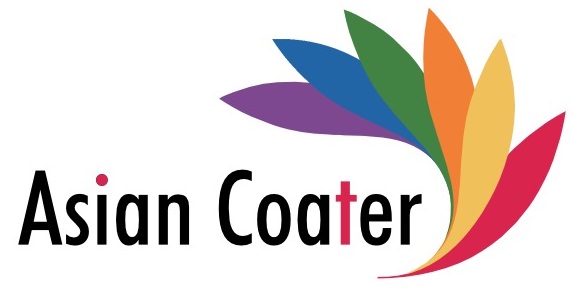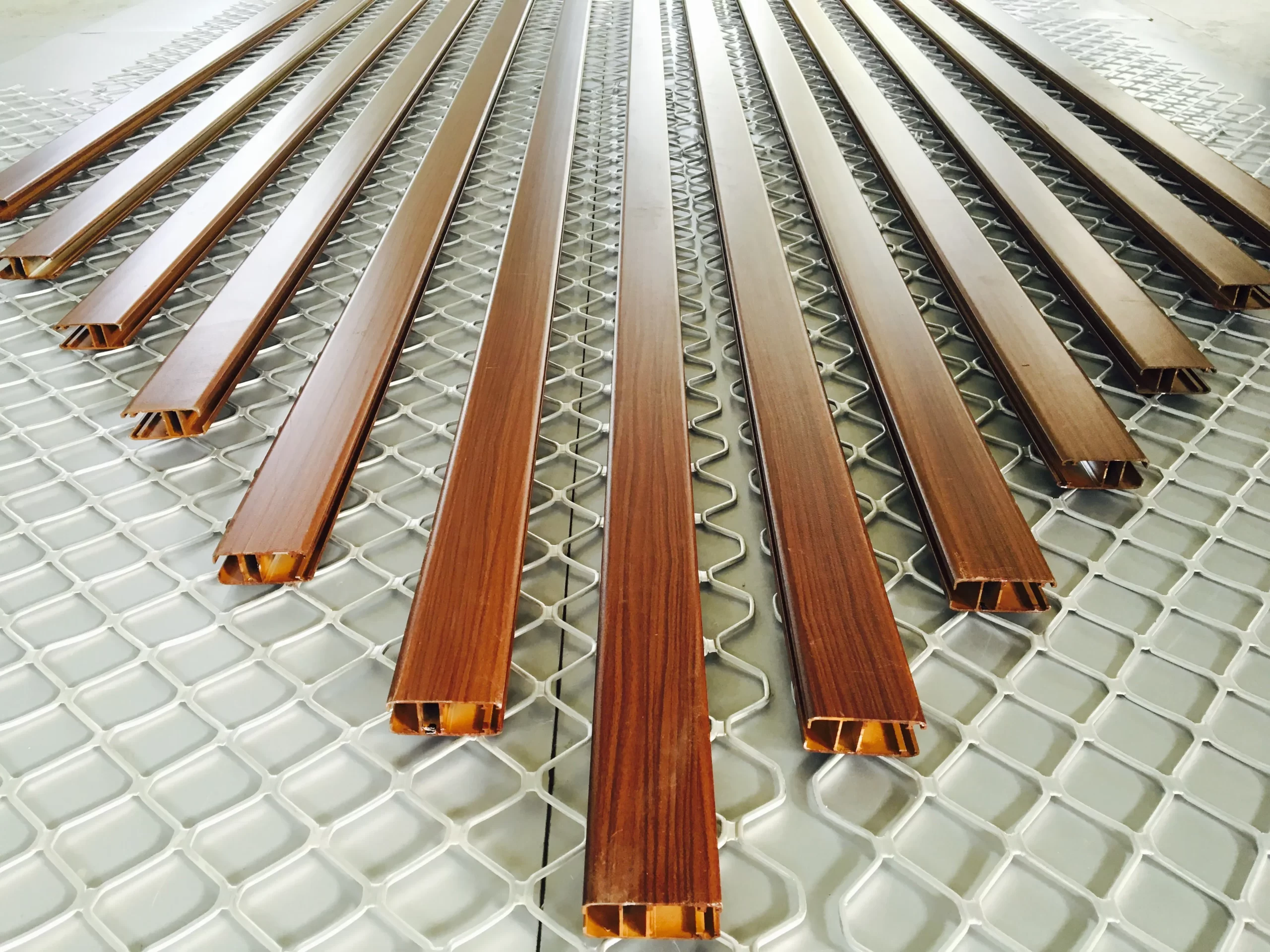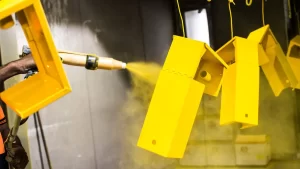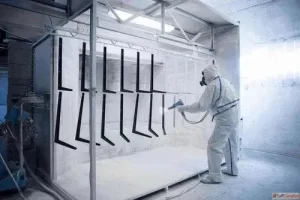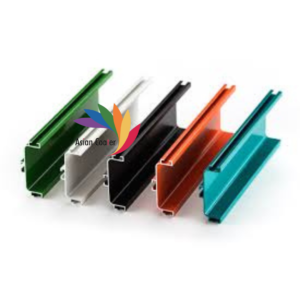Wood powder coating is a process in which a dry powder is applied to wood or wood-based substrates, followed by heat curing to create a durable, smooth, and uniform finish. This is a modern finishing technique used with metal and a few other materials.
This technique, originally developed for metal surfaces, has been adapted for wood products to provide a high-quality coating that offers both aesthetic appeal and functional protection.
In general, any material capable of holding an electrostatic charge and withstanding the heat of the curing oven can be considered suitable for powder coating. Since most curing ovens operate at around 400 degrees Fahrenheit, the material being coated must have a melting or burning point above this temperature. As a result, not all metals are ideal for powder coating, and some other materials may benefit more from alternative coatings or no coatings at all.
1. Materials That Can’t Withstand High Heat
One of the key factors in the powder coating process is heat. After the powder is applied, the item must be cured at high temperatures, typically around 400°F (200°C). Materials that have low melting points or are sensitive to heat, such as plastics, rubber, and wood, are often unsuitable for powder coating because they can warp, melt, or burn in the curing oven.
Wood: Wood is typically not ideal for powder coating due to its inability to withstand high curing temperatures and lack of natural conductivity. However, recent advancements in powder coating technology have made it possible to coat certain types of wood, such as medium-density fiberboard (MDF), which has electrostatic properties. Since powder coating requires conductivity for proper adhesion, the wood must have a moisture content of around 5-7% to be coated effectively. While wood isn’t naturally conductive, its moisture can provide some conductive properties, allowing the coating to bond. Keystone Koating is exploring best practices for powder coating wood.
Plastic: Most plastics can’t withstand the high heat required for powder coating, except for high-temp plastics like polysulfone. However, some facilities use UV curing or low-temp powder coatings to work around this issue. While it’s possible to powder coat plastic for aesthetics or protection, it requires special techniques and may not always be cost-effective.
Glass: Glass isn’t ideal for powder coating due to its low melting point and lack of conductivity. However, with special techniques like pre-treatment or adding conductive materials, glass can be powder coated for applications like light fixtures and decorative panels.
2. Non-Conductive Materials
Powder coating relies on electrostatic attraction to adhere the powder to the surface. For this reason, materials that don’t conduct electricity, like glass, ceramics, and some types of fiberglass, cannot be powder coated without special conductive primers. Even with these primers, the results may not be as consistent or effective as powder coating on metal.
3. Galvanized Metals
Certain types of galvanized metals, which have been treated with zinc to prevent rusting, can pose challenges for powder coating. The zinc layer can create outgassing issues during the curing process, leading to bubbles or imperfections in the final finish. While some galvanized metals can be powder coated with special preparation, others may be better suited for alternative finishes.
4. Materials with Existing Coatings
Materials that already have a finish, such as painted surfaces or anodized metals, are not always ideal for powder coating. The existing coating can prevent proper adhesion of the powder, resulting in an uneven or flawed finish. In such cases, the old coating may need to be removed through sanding or stripping, which can add extra time and cost to the process.
5. Flexible or Thin Materials
Items that are thin or highly flexible, such as thin foils or textiles, are generally not recommended for powder coating. These materials may not hold up well in the curing oven, and their flexibility can cause the powder to crack or flake off over time.
Alternatives to Powder Coating
For materials that cannot be powder coated, there are other finishing options available. Liquid paint, electroplating, or anodizing are alternative methods that can provide similar durability and aesthetic appeal. Each of these processes has its advantages, and the best option depends on the specific requirements of the material and the intended application.
Top Materials for Powder Coating
Powder coating has become a preferred finishing method for many industries due to its durability, efficiency, and environmentally friendly nature. It provides a high-quality finish that’s resistant to scratches, corrosion, and wear.Additionally, metals can withstand high temperatures used during the curing process to form hard surface coatings without unsightly beadings and bumps.
1. Steel
Steel is one of the most common materials used for powder coating, including both carbon steel and stainless steel. Steel surfaces provide excellent conductivity, which helps the powder adhere evenly. Powder coating protects steel from corrosion, adds aesthetic appeal, and provides a durable finish for heavy-duty applications such as automotive parts, industrial machinery, and outdoor furniture.
2. Aluminum
Another top material for powder coating is aluminum, particularly for industries like construction, automotive, and manufacturing. Aluminum’s natural resistance to rust makes it an ideal candidate for powder coating, as the process enhances its durability and extends its lifespan. Powder coating is frequently used on aluminum windows, doors, frames, and extrusions to improve appearance and provide extra protection against the elements.
3. Galvanized Steel
While galvanized steel requires special preparation, it’s still a widely used material for powder coating. The zinc layer used in galvanizing can sometimes cause issues with outgassing during curing, but with the right pre-treatment, galvanized steel can benefit greatly from the added layer of powder coating. This combination is perfect for structures exposed to harsh weather, such as fences, gates, and street furniture.
4. Mild Steel
Mild steel is another excellent material for powder coating due to its strength and versatility. Often used in products like metal shelving, enclosures, and hardware, mild steel benefits from powder coating’s protective and decorative finishes. This coating enhances the durability of mild steel and helps prevent rust and corrosion.
5. Copper
Though less common, copper is also a candidate for powder coating. Often used in electrical components and decorative pieces, copper can be powder coated to improve its surface durability and create a range of colors or textures. Powder coating protects the copper from oxidation and tarnishing, while enhancing its appearance.
6. Cast Iron
Cast iron items, such as outdoor furniture, railings, and machinery components, are well-suited to powder coating. The thick, heavy-duty nature of cast iron means it benefits from the added protection of powder coating, which guards against rust and wear. Powder coating also gives cast iron a smooth and polished finish, making it both functional and visually appealing.
7. Brass
While brass is not as commonly powder coated as steel or aluminum, it can still benefit from the process. Powder coating helps protect brass from tarnishing and corrosion, particularly for decorative applications like light fixtures, hardware, and faucets. It also provides a longer-lasting finish compared to traditional coatings or paints.
Powder Coating From ASIAN COATER
At ASIAN COATER, we specialize in providing powder coating services for a variety of materials, including steel, aluminum, cast iron, and more. Whether for industrial machinery, automotive parts, or architectural elements, our powder coating solutions enhance the durability and appearance of your products. Our coatings offer resistance to corrosion, wear, and weathering, ensuring that your surfaces maintain their integrity and aesthetic appeal for years to come.
One of the main advantages of powder coating from ASIAN COATER is its environmental friendliness. Unlike liquid paints, powder coatings contain no solvents or harmful chemicals, reducing emissions and waste. Additionally, our state-of-the-art facilities and precision application ensure even coverage and consistent results every time.
Choose ASIAN COATER for premium powder coating services that combine reliability, durability, and sustainability, tailored to meet your specific needs.
